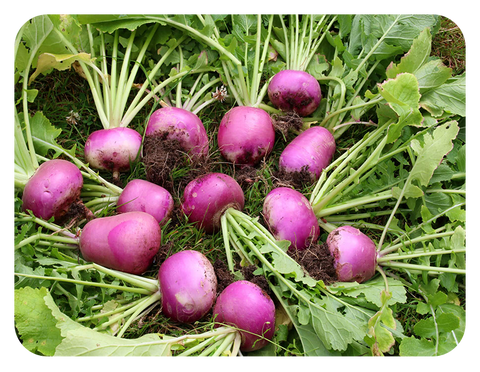Radishes can be one of the easiest and fastest vegetables to grow in a home garden, but they can also be a bit fussy about growing conditions. There are four common problems that plague home gardeners when trying to grow radishes, including being too spicy to eat, failing to form bulbs, growing hard woody flesh, or cracked vegetables. Fortunately, all of these problems can be avoided if you grow radishes under good conditions. The following content also has some reference value for raised garden beds.
01: Super spicy radish
One of the most common problems with radishes is that they are too hot. While some varieties of radishes are naturally spicier than others, the red earth ball type radishes often used in salads should be quite tasty. If your Earth radishes seem too hot to eat, it's probably because they've been growing too long - radishes are either too slow or too old.

Radishes love cool weather, but need enough warm and humid weather for them to grow before it really gets hot. This vegetable grows quickly and needs to be harvested when the radishes have reached a ripe size. Unlike carrots and beets, radishes do not become sweeter if stored in the ground. If you leave them in for too long, the radishes get spicier. If you can't eat all of your radishes in one sitting, try planting them in succession rather than in one large section at a time.
02: Cracked radish
Sometimes, as radishes mature and get older, they crack. Cracking is often the result of uneven watering. Trying to compensate for a period of drought with a lot of water can cause the radish to grow too fast inside and crack. Make sure your radishes get at least 1 inch of water a week.
Cracked or cracked radishes are usually still edible. If it's just a cosmetic crack or two, you can still enjoy them in your salad - once they're cut, no one will notice the crack.
03: Tough, Woody radish
Leaving radishes in the garden for too long can also cause them to become hard and woody. Radishes need to grow quickly to ensure they are tender and plump when harvested. If radishes don't get the cold temperatures and lots of regular water they need, they will take longer to grow to mature size, and you may want to leave them in the soil until they are full. At this point they begin to harden and dry.
Spring and autumn are the easiest seasons to plant radishes. Some radishes, such as the "black Spanish" variety, prefer to grow during the short days of autumn. They are left in the ground during the winter and harvested in the spring. Although black radishes look tough, their skin is actually very tender. Be careful with the white flesh though, it's really spicy.

04: Only leaves, no bulbs
Radishes that have not grown into bulbs are of little benefit to the gardener who wants sliced radishes for a salad. The most common cause of green turnips is hot weather. Once the weather warms up, radishes will sprout and try to plant seeds.
The lack of development is due to planting too thick and not pruning about 1 to 2 inches between the plants. If the plants are crowded together on the bed, they will rub against each other and they will sense that there is not enough room to grow, so they will go sowing.
Lack of sunlight is another reason radishes are underdeveloped. Radishes can tolerate a little shade, especially as temperatures rise, but they need a few hours of direct sunlight to fully develop.
You may have better luck growing a long, thin radish, like a "white icicle." This kind of radish has long roots and requires less space than spherical radishes. They may take a few days to mature, but you don't need that much.
Of course, if you want to avoid this problem entirely, you can simply grow edible pod radishes, which are cultivated for their crunchy, rich seed pods, like "rat tails." This plant loves hot weather, has few pest problems, and never forms bulbs.










